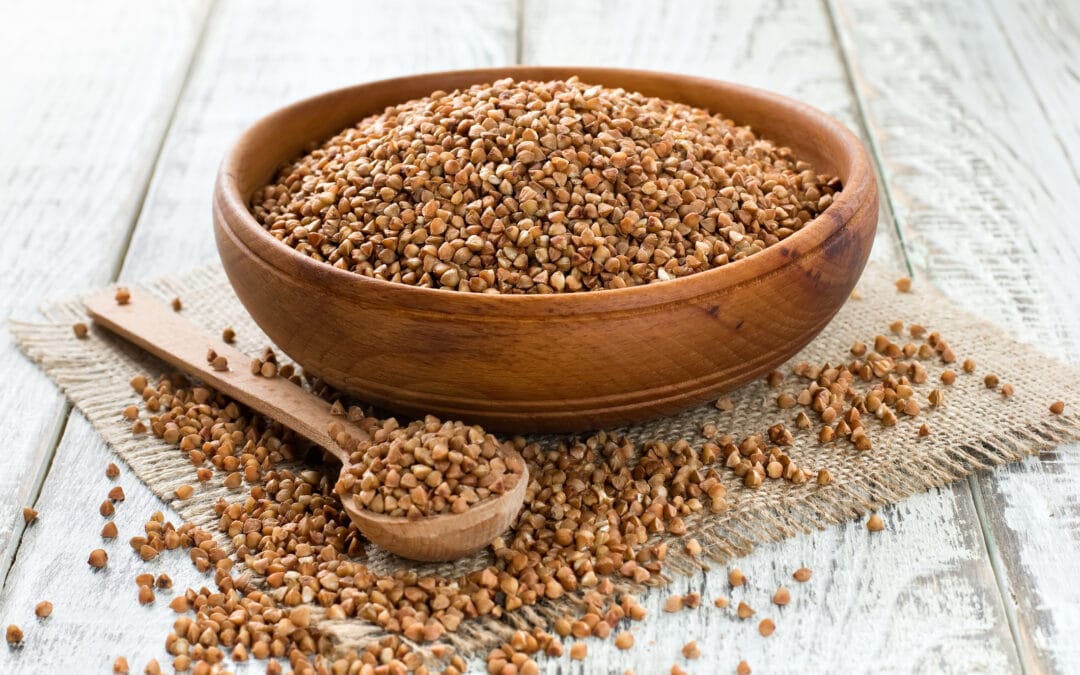It’s possible to increase GLP-1 naturally without the side effects of risky pharmaceuticals. Glucagon-like peptide-1 (GLP-1) is a hormone produced naturally in the L-cells of the small intestine and released in response to food intake. It’s nature’s built-in appetite suppressant that helps you manage your weight and stabilize your blood sugar, but GLP-1 also helps eliminate those mid-afternoon energy crashes and late-night snack cravings.
However, when the body produces GLP-1, it has a short half-life and is quickly degraded in 2-11 minutes1,2 by an enzyme called DPP-4. The short half-life of naturally produced GLP-1 has led to the development of medications called GLP-1 receptor agonists to help extend the duration of the treatment of type 2 diabetes.3
Why is GLP-1 Suddenly Popular?
GLP-1’s recent popularity is a result of its role in weight loss, diabetes management, and the growing obesity epidemic. GLP-1 receptor agonist medications mimic the effects of naturally produced GLP-1 but in a more potent and longer-lasting form. Since they help lower blood sugar and promote weight loss, the use of GLP-1 drugs has gained media attention with stories of celebrities using them, creating a much-discussed topic in both medical circles and popular culture. But when it comes to weight loss, risky pharmaceuticals are not the answer for most people.
GLP-1 Science
First, it’s important to understand how the GLP-1 hormone works in the body. This peptide hormone is produced mainly in the small intestine and other sites that regulate glucose metabolism, including the pancreas, liver, brain, and stomach.4 These organs work together to ensure GLP-1 helps regulate blood glucose levels, appetite, and body weight.
GLP-1 is released when a person eats, particularly foods rich in carbohydrates and fats. This release begins when food leaves the stomach and enters the small intestine. Contact of nutrients with the gut’s L-cells may cause a prolonged duration of elevated GLP-1 during meals. The GLP-1 hormone:
- promotes the release of insulin from the pancreas to help lower blood sugar
- reduces the secretion of glucagon, a hormone that raises blood sugar when needed, especially between meals
- slows down the rate at which food leaves the stomach (gastric emptying), which can help prevent spikes in blood sugar
- promotes a feeling of fullness
GLP-1 receptors are present in various tissues, including the heart. Recent research5 shows that GLP-1 activation may also have cardioprotective benefits, including improving heart function and reducing inflammation.
GLP-1 Agonist Medications
An “agonist” is a manufactured substance that causes action similar to a naturally occurring substance. The higher the dose of the GLP-1 agonist, the more extreme the effects. These medications are often prescribed for type 2 diabetes to help manage blood sugar by triggering the release of more insulin, slowing digestion, decreasing blood sugar spikes, and reducing appetite. These combined effects commonly result in weight loss.
There are different types of GLP-1 agonists with different actions in the body. Short-acting GLP-1 medications stay in the body for less than a day and control blood sugar levels after meals. These include exenatide (Byetta®), lixisenatide (Adlyxin™), and oral semaglutide (Rybelsus®), which are typically taken once or twice a day.
Long-acting GLP-1 medications stay in the body and continue to work for a full day and up to one week. These include semaglutide (Ozempic® and Wegovy®), liraglutide (Victoza® and Saxenda®), dulaglutide (Trulicity®), and extended-release exenatide (Bydureon®). Liraglutide is taken once daily, and other long-acting GLP-a agonists are taken weekly.
Here’s the question—why would the body break down naturally produced GLP-1 so quickly? Perhaps there is a reason why the body does not want GLP-1 sticking around too long. But the GLP-1 agonist medications do exactly that—they prolong GLP-1’s duration in the body. This is one reason why all of the long-term effects of these drugs are currently unknown.
Risks of Taking GLP-1 Agonists for Weight Loss
When deciding whether or not to take a medication for weight loss, it’s essential to evaluate the risks versus benefits. One recent review of 18 randomized controlled trials6 showed significant drops in fat-free (muscle) mass in diabetics taking these medications, with semaglutide (Ozempic® and Wegovy®) having the most substantial effect. This is an enormous risk since maintaining muscle and bone (fat-free mass) is essential to optimal health. Also, the artificial weight loss that people achieve using these synthetic medications is not sustainable. Once you go off the medication, the weight comes right back.
There are many other side effects7 of taking GLP-1 agonist medications:
- Nausea
- Vomiting
- Diarrhea or constipation
- Abdominal pain
- Heartburn
- Burping
- Flatulence (gas)
Although many people can handle some of these unpleasant effects, there is potential for more serious reactions:
- Vision changes or retina damage
- Yellowing of the skin or eyes
- Rapid heartbeat
- Swelling in the legs, ankles, or feet
- Dizziness or fainting
- Chronic stomach pain (with or without vomiting)
- Eating disorders
- Suicidal thoughts
- Gallbladder dysfunction, including gallstones
- Pancreatitis or pancreatic cancer
- Kidney damage
- Thyroid cancer
How to Increase GLP-1 Naturally
Rather than risking the potential long-term, dangerous effects of weight loss medications, it’s possible to boost GLP-1 production naturally with the right food and lifestyle choices since the body already produces this “miracle molecule.” One study showed that a lower carbohydrate-moderate protein diet (30% of calories from protein, 40% from carbohydrates, and 30% from fat) causes greater GLP-1 secretion than a higher carbohydrate-lower protein diet (10% of calories from protein, 60% from carbohydrates, and 30% from fat).1
Certain foods increase GLP-1:
- Bitter foods such as arugula, dandelion greens, cruciferous vegetables, coffee, green tea, grapefruit, lemon, radishes, bitter melon, artichoke, radicchio, ginger, olives, and dill can increase GLP-1 naturally. In fact, bitter taste receptors that live in the small intestine control the release of GLP-1. Some researchers believe that the decrease in our consumption of fruits and vegetables (including bitters) may be one reason for the decline in GLP-1 secretion and increase in GLP-1 deficiency.
Himalayan tartary buckwheat9 is an ancient bitter superfood that deserves special attention. Its high fiber content slows digestion, allowing for a sustained release of GLP-1, which helps naturally with appetite, weight management, longevity, and overall health.
- Fiber-rich foods such as fruits, vegetables, whole grains, and legumes help beneficial bacteria in the gut produce short-chain fatty acids, which act as signals and prompt the release of GLP-1.
- Polyphenols in foods help feed beneficial gut bacteria, promoting an optimal environment for the natural production of GLP-1. These foods include all berries, raw olives (especially black olives), brightly-colored vegetables (red cabbage, spinach, bell peppers), flaxseeds, hazelnuts, pecans, green tea, rosemary, peppermint, spearmint, and thyme.
- Fermented foods rich in probiotics are also important for GLP-1 secretion. A gut microbiome missing key beneficial bacterial strains can affect metabolic health. For example, akkermansia, a critical bacteria associated with metabolic health, secretes a specific protein that stimulates GLP-1 production.10
Lifestyle choices can also help increase GLP-1 naturally:
- Regular exercise, including both cardiorespiratory and strength training, can enhance GLP-1 production. Studies show increased levels of GLP-1 after moderate- or high-intensity exercise can be an effective way to restore metabolic function, especially in healthy obese individuals that typically have GLP-1 deficiency.11
- Restful sleep is essential for GLP-1 release. Sleep disturbances are well-known risk factors for abnormal glucose metabolism, obesity, and a lower GLP-1 response to glucose.12
- Stress management can be beneficial since chronic stress can reduce GLP-1 production.13 Consider deep breathing, yoga, or meditation to improve GLP-1 naturally.
- Eating slowly and mindfully can enhance the GLP-1 response to meals. One study demonstrated that eating the same meal slowly (over 30 minutes instead of 5 minutes) leads to higher concentrations of GLP-1 and other gut peptides.14
Food and Lifestyle for Sustainable Weight Loss
Eating the right foods and making healthy lifestyle choices are more powerful ways to send the correct signals to the body and enhance the symphony of our metabolism and overall health. When it comes to weight loss and metabolic health, there are no “quick fixes” but plenty of effective natural solutions.
REFERENCES
- Müller TD, Finan B, Bloom SR, D’Alessio D, Drucker DJ, Flatt PR, Fritsche A, Gribble F, Grill HJ, Habener JF, Holst JJ, Langhans W, Meier JJ, Nauck MA, Perez-Tilve D, Pocai A, Reimann F, Sandoval DA, Schwartz TW, Seeley RJ, Stemmer K, Tang-Christensen M, Woods SC, DiMarchi RD, Tschöp MH. Glucagon-like peptide 1 (GLP-1). Mol Metab. 2019 Dec;30:72-130.
- Smith NK, Hackett TA, Galli A, Flynn CR. GLP-1: Molecular mechanisms and outcomes of a complex signaling system. Neurochem Int. 2019 Sep;128:94-105.
- Deacon CF, Holst JJ. Dipeptidyl peptidase-4 inhibitors for the treatment of type 2 diabetes: comparison, efficacy and safety. Expert Opin Pharmacother. 2013 Oct;14(15):2047-58.
- Mehdi SF, Pusapati S, Anwar MS, Lohana D, Kumar P, Nandula SA, Nawaz FK, Tracey K, Yang H, LeRoith D, Brownstein MJ, Roth J. Glucagon-like peptide-1: a multi-faceted anti-inflammatory agent. Front Immunol. 2023 May 17;14:1148209
- Ferhatbegović L, Mršić D, Macić-Džanković A. The benefits of GLP1 receptors in cardiovascular diseases. Front Clin Diabetes Healthc. 2023 Dec 8;4:1293926.
- Ida S, Kaneko R, Imataka K, Okubo K, Shirakura Y, Azuma K, Fujiwara R, Murata K. Effects of Antidiabetic Drugs on Muscle Mass in Type 2 Diabetes Mellitus. Curr Diabetes Rev. 2021;17(3):293-303
- Semaglutide Injection. (2023). National Library of Medicine.
- Popoviciu MS, Păduraru L, Yahya G, Metwally K, Cavalu S. Emerging Role of GLP-1 Agonists in Obesity: A Comprehensive Review of Randomised Controlled Trials. Int J Mol Sci. 2023 Jun 21;24(13):10449.
- Neacsu M, Vaughan NJ, Multari S, Haljas E, Scobbie L, Duncan GJ, Cantlay L, Fyfe C, Anderson S, Horgan G, Johnstone AM, Russell WR. Hemp and buckwheat are valuable sources of dietary amino acids, beneficially modulating gastrointestinal hormones and promoting satiety in healthy volunteers. Eur J Nutr. 2022 Mar;61(2):1057-1072.
- Yoon HS, Cho CH, Yun MS, Jang SJ, You HJ, Kim JH, Han D, Cha KH, Moon SH, Lee K, Kim YJ, Lee SJ, Nam TW, Ko G. Akkermansia muciniphila secretes a glucagon-like peptide-1-inducing protein that improves glucose homeostasis and ameliorates metabolic disease in mice. Nat Microbiol. 2021 May;6(5):563-573.
- Martins C, Stensvold D, Finlayson G, Holst J, Wisloff U, Kulseng B, Morgan L, King NA. Effect of moderate- and high-intensity acute exercise on appetite in obese individuals. Med Sci Sports Exerc. 2015 Jan;47(1):40-8.
- Reutrakul S, Sumritsopak R, Saetung S, Chanprasertyothin S, Anothaisintawee T. The relationship between sleep and glucagon-like peptide 1 in patients with abnormal glucose tolerance. J Sleep Res. 2017 Dec;26(6):756-763. doi: 10.1111/jsr.12552. Epub 2017 May 31. PMID: 28560837.
- Schernthaner-Reiter MH, Wolf P, Vila G, Luger A. The Interaction of Insulin and Pituitary Hormone Syndromes. Front Endocrinol (Lausanne). 2021 Apr 28;12:626427.
- Kokkinos A, le Roux CW, Alexiadou K, Tentolouris N, Vincent RP, Kyriaki D, Perrea D, Ghatei MA, Bloom SR, Katsilambros N. Eating slowly increases the postprandial response of the anorexigenic gut hormones, peptide YY and glucagon-like peptide-1. J Clin Endocrinol Metab. 2010 Jan;95(1):333-7.

